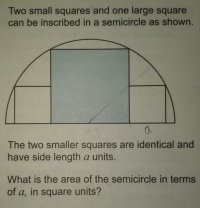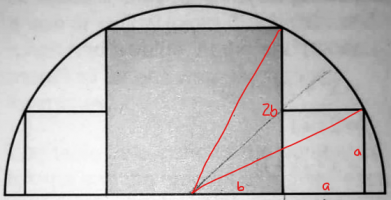I assume if little square side is a, then the big square is 2a (double the size) is it correct?
after that I use pythagoras theorem to find the diagonal of big square (which is the radius)
then the area of semi circle is 1/2 . pi . ((root 5) a)squared = 5/2.pi a squared (is this the correct answer?)

after that I use pythagoras theorem to find the diagonal of big square (which is the radius)
then the area of semi circle is 1/2 . pi . ((root 5) a)squared = 5/2.pi a squared (is this the correct answer?)


